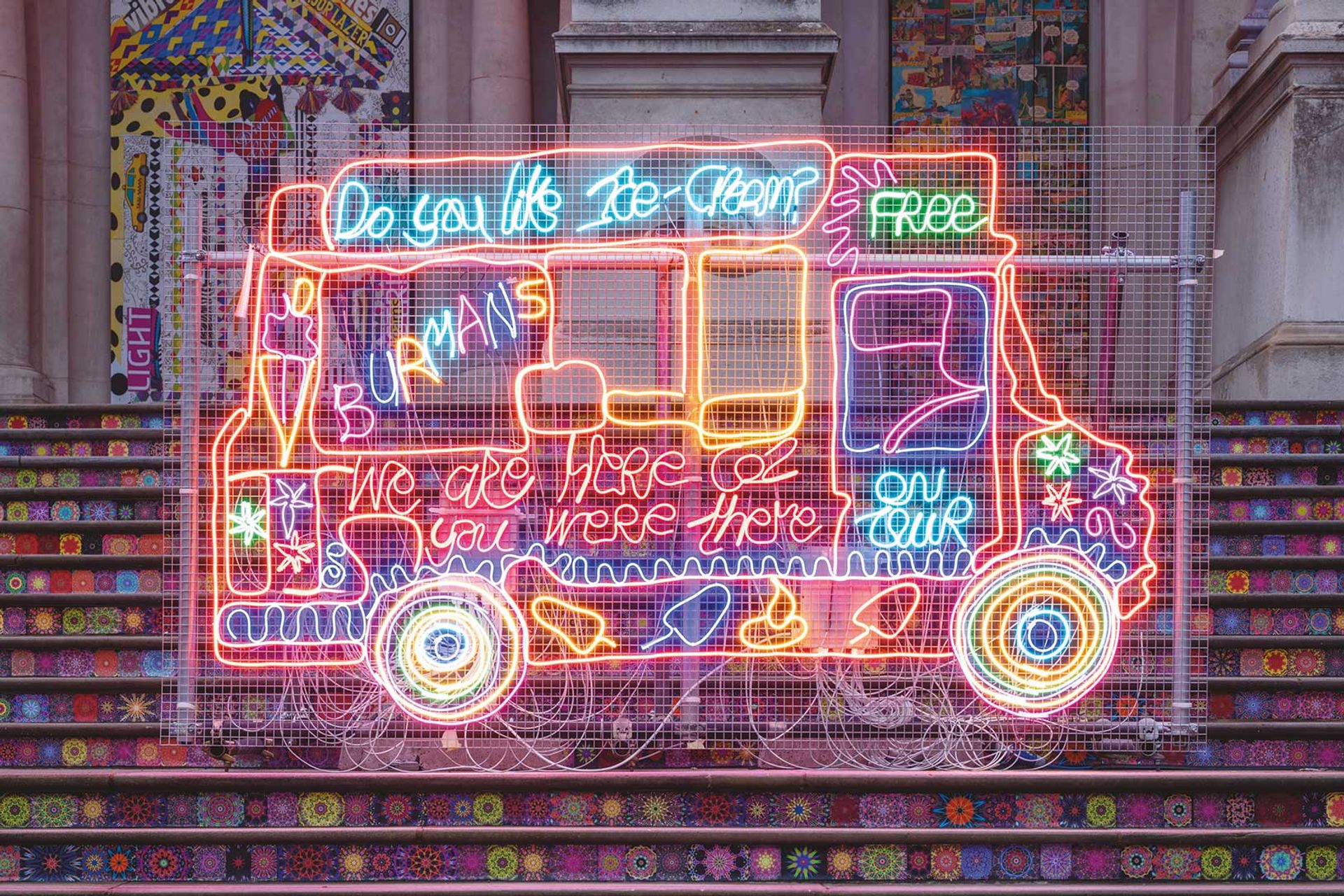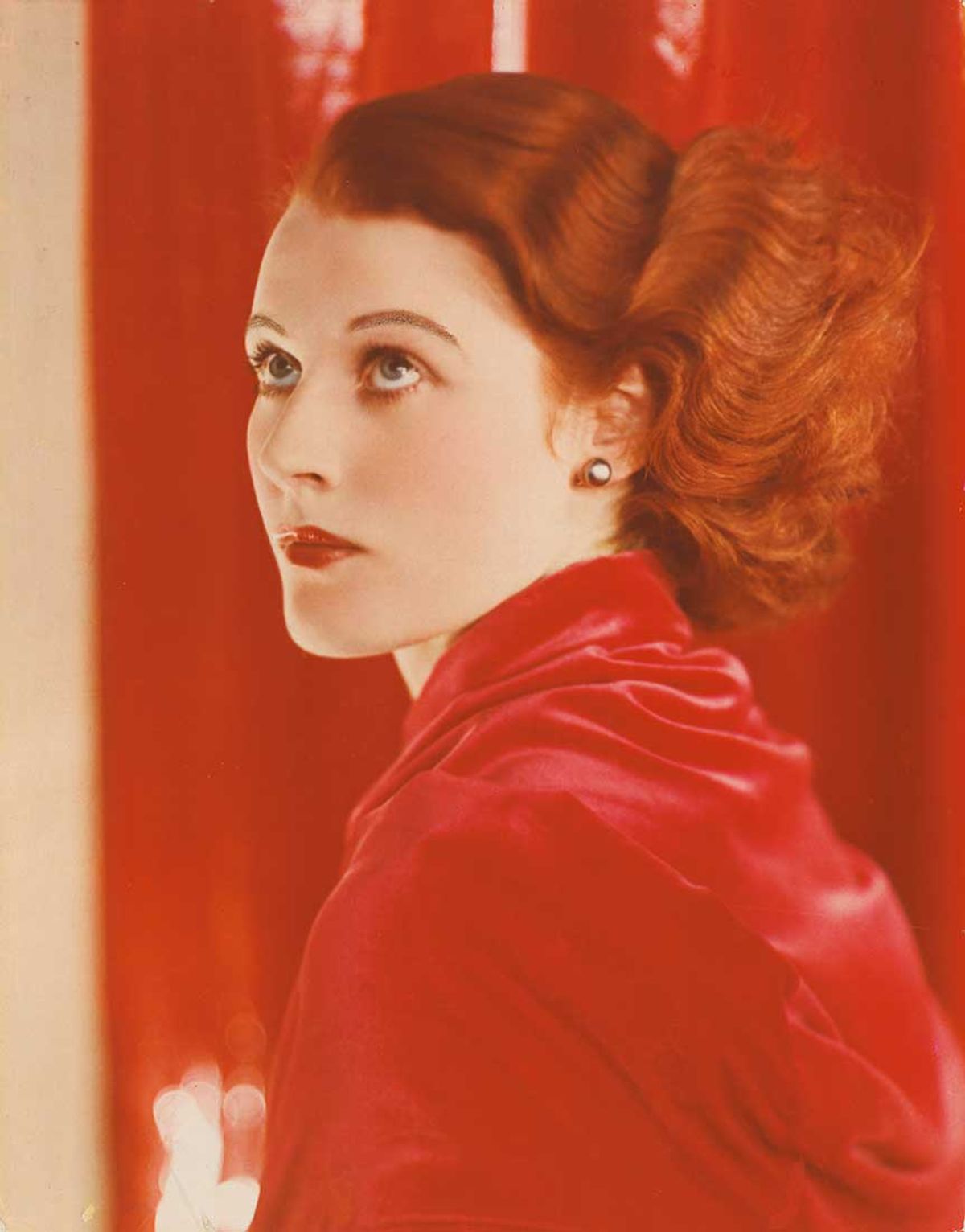On first reading this book’s title, I immediately thought of Thomas Pynchon’s novel Gravity’s Rainbow (1973), which tells the story of the secret development and deployment of rockets by the Nazis at the end of the Second World War. The Rainbow’s Gravity is, of course, a very different book concerned, as it is, with colour, materiality and British modernity. The rainbow in question is the colourful arc from the documentary This is Colour (1942, directed by Jack Ellitt) which was made to demonstrate the potential of Technicolor film. Kirsty Sinclair Dootson, a lecturer in film and media at University College London, elucidates the reasoning for her title early on: “To claim the rainbow has gravity is… not only to imply that colour has a literal weight. It is also to metaphorically invoke colour’s seriousness, its gravity, as a political as well as aesthetic phenomenon.” Her chosen period makes sense too—bookended by the invention of synthetic dyes in 1856 and the beginning of full colour broadcasting on the BBC in 1968.
Dootson’s arguments are well made through close analyses of carefully chosen case studies that enable her to explicate complex ideas around subjects from chromatic imperialism to race and the BBC. In the first of five deeply researched chapters, the author shows how new techniques for manufacturing artist’s colours in the mid-19th century brought about artistic responses that critiqued both the quality of the paint itself and its effect on artistic labour. William Holman Hunt was preoccupied with the discolouration of paint and articulated his dissatisfaction in terms of objectionable racial othering, using the colour of skin as a benchmark for chromatic fidelity. There were disagreements about the material substance of the paints too, and while George Frederic Watts worked to attain a drier, stiffer paint surface, James Abbott McNeill Whistler preferred a greater liquidity, something John Ruskin regarded as debasing the art of painting.
The new colour printing technology of chromolithography is the subject of Dootson’s second chapter. The use of the technique’s spotty “stippled”
appearance in contemporary advertising for A & F Pears demonstrates how visualising and exploiting racial difference became central to Victorian advertising, as the body of a Black infant is washed white by a white child brandishing a bar of soap.
Another new technology, the British Vivex process for colour photography, is the subject of Dootson’s third chapter along with the arresting work of Madame Yevonde, whose 1932 portrait of actress Joan Maude adorns the book’s dust jacket. Vivex brought a strength of colour that had not been seen before. In inter-war Britain, women’s looks (including clothes and cosmetics) became a measure of modernity. At the same time, the intensity of colour photographs by female photographers such as Yevonde counteracted the male dominated field of black-and-white photography of the period, and colour quickly came to be associated with the feminine.
In the next chapter, London’s Technicolor film laboratory is examined as a prime instance of chromatic imperialism in post-war colour cinema, especially following India’s independence in 1947. Taking the example of Jhansi Ki Rani (1953, directed by Sohrab Modi), a drama set against the Indian Mutiny of 1857 and filmed in India but processed in London, Dootson examines the drivers for economic and commercial imperialism to reveal the connections between imperial ideology and Technicolor, and further exposes the toxic processes and hazardous labour of the laboratory necessary to bring such impressive colour films to the screen.

Detail of Chila Kumari Singh Burman’s Remembering a Brave New World (2020) at Tate Britain, London
© Chila Kumari Singh Burman/Photo © Tate (Joe Humphrys)
The BBC’s “colour problem”, as Dootson terms it, follows in a final chapter that exposes how the corporation’s move from monochrome to colour television in the 1960s infiltrated debates about Commonwealth migration and racial identity in Britain. This was the era of the BBC’s Black and White Minstrel Show, begun in 1958, and Enoch Powell’s “Rivers of Blood” speech in 1968. Dark skin on television was framed as a technological challenge.
By way of a coda, Dootson leaves her reader with the example of a contemporary work, Chila Kumari Singh Burman’s neon extravaganza Remembering a Brave New World (2020), which was installed across the façade of Tate Britain and acted to upend conventional accounts of British history. Burman’s work neatly encapsulates Dootson’s explorations of imperialism and colonialism, the foregrounding of the creative work of women and their use of colour, the linguistic slippage, as Dootson calls it, between racial designation and optical hue, and the embeddedness, still, of such ideas in British culture. The point, of course, is that the coda to The Rainbow’s Gravity is not a conclusion on our contemporary culture, but an opening up.
• Beth Williamson is an art historian and writer
• Kirsty Sinclair Dootson, The Rainbow’s Gravity: Colour, Materiality and British Modernity, Paul Mellon Centre/Yale University Press, 232pp, 120 colour & b/willustrations, £45 (hb), published 2 May


